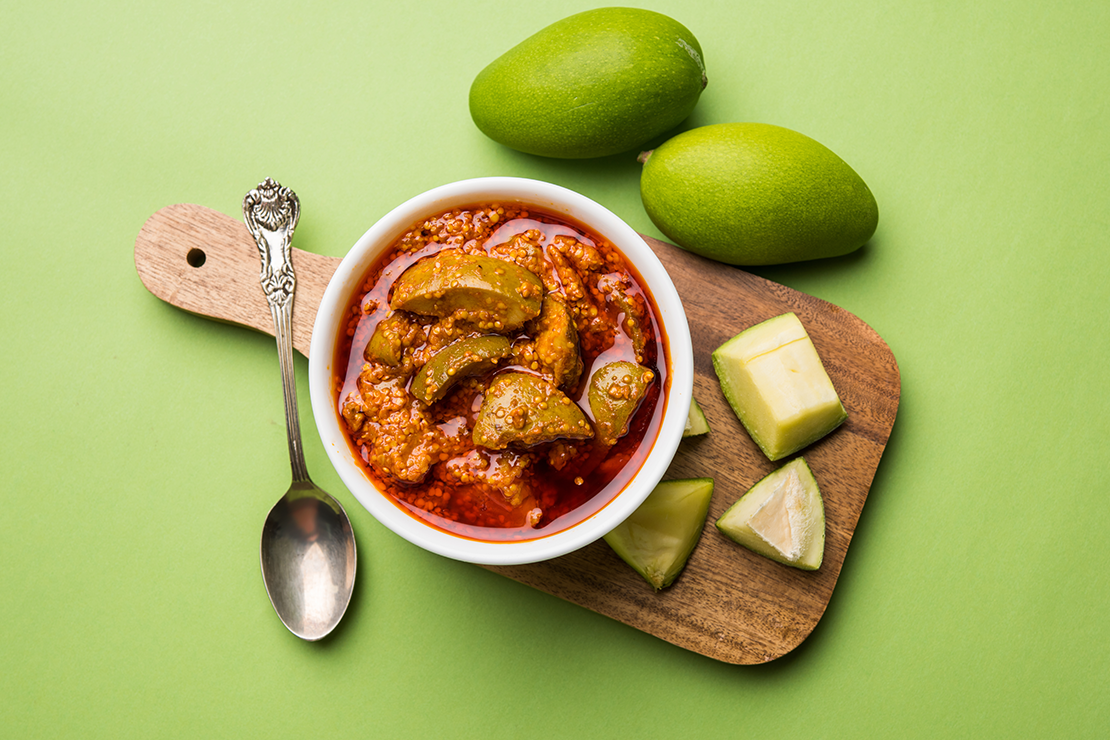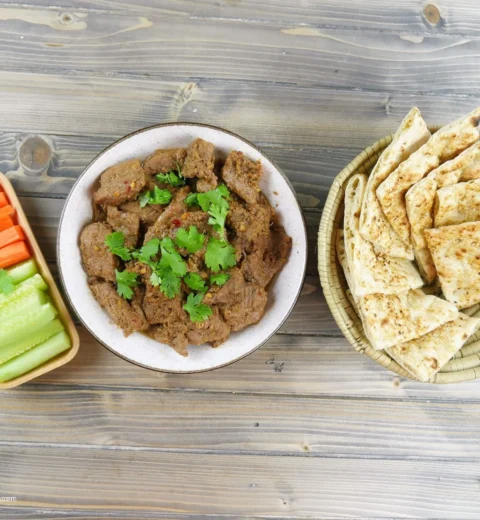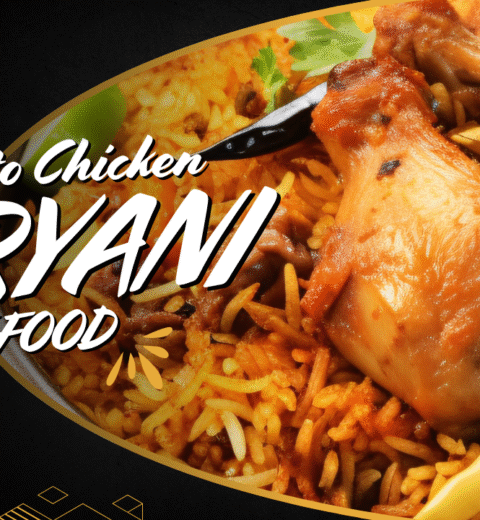Love the tangy bite of mango pickle with your meal? Mango pickle isn’t just a side; it’s part of our memories and heritage. Every family has its own touch, but the best recipes come from tradition—passed down by elders, refined with years of small but significant secrets. In this blog post, you’ll discover a proven Mango Pickle Recipe from BaBa Food RRC. It’s packed with practical advice, business-friendly tips, and trusted methods straight from the kitchen of the expert’s own mother-in-law. If you want consistent results and unbeatable taste, read on.
The Importance of Mango Pickle & Why Now Is the Best Time to Make It
Mango pickle, or आम का अचार, holds a special place in countless kitchens across India and Pakistan. It’s not just food—it’s a tradition people look forward to every summer. Right now is the peak season for raw mangoes. That means the perfect time to stock up, preserve, and even grow your income by selling homemade pickle.
Why is this season perfect for making achar?
- Raw mangoes are fresh, firm, and full of flavor.
- Prices are down, and quality is up.
- People crave new batches of fresh achar.
But people often slip up during the process, causing the pickle to spoil before it can be enjoyed. Here are a few common mistakes:
- Ignoring tiny details with cutting or washing.
- Using too much or too little salt and turmeric.
- Boiling mangoes for too long.
- Not preparing the oil properly.
- Storing achar in metal or plastic containers.
Understanding these pitfalls is key to making a long-lasting, marketable pickle that family — or customers — will ask for again and again.
Choosing and Preparing Raw Mangoes
The foundation of any good Mango Pickle Recipe is the mango itself. Pick the right one, and you’re halfway there.
The Right Mangoes for Pickle
- Firm, green, and raw (avoid any ripe or soft patches).
- Smooth skin with no bruises or marks.
- Medium to large size works best for easy slicing.
Care here prevents pieces from going mushy or giving your pickle an off taste.
How to Wash and Cut Mangoes the Right Way
A crucial step, often skipped, is how you treat your mangoes before spicing. The traditional family method shared in the video includes keeping some of the top skin (natural “cover”) attached. Here’s how to get it right:
- Thoroughly wash: Clean 3 kg of raw mangoes well.
- Trim but don’t peel all skin: Cut just enough on the top but leave some skin for extra zest and a firm bite.
- Slice carefully: Cut mangoes length-wise or in quarters, keeping slices thick. Avoid making them so thin that they lose shape during the pickling process.
- Remove seeds: Always take out the hard seed inside, but don’t scoop too deep.
Pro tip: Some like cutting the mangoes small for even spice coating, others do bigger pieces for crunch. Just keep the shape consistent for even pickling.
Boiling Mango Pieces with Salt and Turmeric
Most people don’t boil their mangoes for pickle, but this step can transform the final result. Brief boiling reduces rawness while keeping the firmness needed for a crispy bite.
Follow this 5-step guide:
- Boil water in a large pan—enough to fully immerse all pieces.
- Once boiling, add mango pieces.
- Stir in 1 tablespoon turmeric and 1 tablespoon Lahori (non-iodized) salt.
- Boil just 3-4 minutes—no more! You want mangoes to keep their bite.
- Remove quickly and drain—don’t soak too long. Rinse under cold water to stop cooking.
Let all mango pieces cool on a clean cloth until fully dry and at room temperature. Any residual moisture can cause spoilage later.
Preparing Mustard Oil – The Secret to Long-Lasting, Tasty Pickle
Mustard oil isn’t just a flavor choice; it’s a preservative, the backbone of a good Mango Pickle Recipe.
Steps for preparing mustard oil:
- Take 3 kilos of mustard oil (for approx. 3 kg mango).
- Heat it on medium until it starts to smoke.
- Add a small dough ball—a trick from the elders. When you fry this in oil, it pulls out the “rawness” (kachapan) of the oil.
- Keep flame medium-low and simmer for 15 minutes.
- Let the oil cool overnight. Never add hot oil straight to the mix.
Traditional tip: Adding the small dough pellet makes the oil lighter in taste but heavy on aroma—an old-school move that pays off in shelf life and flavor.
If you want to learn more about why mustard oil is best for pickle, check out this detailed guide on picking oils for Indian pickles.
Mixing Spices – The Magic of Sasumaa’s Recipe
Here comes the heart of flavor! This unique blend of spices ensures a pickle that isn’t just tangy and spicy, but bold and aromatic.
Full List of Spices Used
| Spice | Amount |
|---|---|
| Turmeric | 1 heaped tbsp (15g) |
| Salt | 1 heaped tbsp (10g) |
| Red Chilli Powder | 5 tbsp (50g) |
| Coriander Seeds (coarse coriander) | 5 tbsp, coarsely crushed (50g) |
| Fennel Seeds (Fennel) | 4 tbsp (40g) |
| Fenugreek Seeds (fenugreek seeds) | 4 tbsp, whole (40g) |
| Nigella/Black Seed (Kalonji) | 4 tbsp (40g) |
| Cumin Seeds (Cumin) | 4 tbsp (40g) |
| Sugar | 5 tbsp (for balance & preservation) |
| Mustard Oil | As prepared above (half the total for mixing, rest for topping up) |
Mixing the Spices
- Ensure the boiled and cooled mango pieces are moisture-free.
- Place mangoes in a clean large bowl or the final clay pot (mitti ki handi).
- Add all the spices, salt, sugar, and turmeric on top.
- Pour in half the cooled mustard oil.
- Mix with a large, dry spoon—cover every piece for the deepest flavor.
- Let sit for a few minutes. Then transfer to your storage jar, layering more of the oil on top if needed.
A good stir ensures every mango slice gets its coating of flavor and protection. Using sugar not only adds subtle flavor but also helps prevent quick spoilage.
Why Use an Earthen Pot (Mitti Ka Bartan) for Pickle?
Using clay pots is more than a tradition, it’s science. Salt and turmeric are harsh; they react with metal, damage plastic, and can leach chemicals from containers.
Benefits of Earthenware Pots:
- They regulate moisture, pulling out excess water.
- They preserve flavor and aroma for months.
- They don’t react with acids in the pickle.
- They keep your pickle cool and free from spoilage.
While glass jars are also good (try for thick, food-grade ones), nothing beats the pure, old-fashioned taste of pickle stored in mitti ke bartan.
Proper Storage and Aftercare – Keeping Your Pickle Perfect
Good storage is the difference between a delicious pickle and a ruined batch.
How to store your mango pickle for the best results:
- Transfer mixed pickle to clay or glass jars.
- Cover with muslin (malmal) or jali cloth. This keeps bugs and dust out but allows air circulation.
- Don’t use airtight lids yet; wait at least 5-7 days.
- Let the pickle rest in a warm, dry spot—but out of direct sunlight—for a week.
- Check daily for any excess water on top. If seen, drain gently with a spoon.
- After one week, wipe the jar’s rim and cover with a tight-fitting lid for long-term storage.
- Store in a cool, dry place.
This approach helps the flavors mature, pulls out remaining water, and extends shelf life. Done right, your achar stays fresh for a year or longer.
Common Mistakes in Making Mango Pickle & How to Avoid Them
Many home cooks run into trouble—but you can steer clear with these simple checks.
- Cutting pieces too big or too thin: Stick to medium-thick slices for the right crunch.
- Overboiling the mango: 3-4 minutes is enough; longer will make them mushy.
- Not drying mangoes completely before mixing spices: Even light moisture can lead to mold.
- Adding hot oil to the mix: Let it cool, or the pickle turns soft over time.
- Using iodized salt instead of coarse non-iodized salt: Always use Lahori namak or any plain pickling salt.
- Neglecting regular checks for excess water or spoilage: Check jars daily during the first week.
- Wrong storage jars: Never store in steel, aluminum, or everyday plastic.
Taste, Testing, and Pickle Business Tips
Before selling or packing, always do a small taste test. This lets you adjust salt, spice, or sugar for your market or family—because everyone’s palate is unique.
Want to market your Mango Pickle Recipe? Try these tips:
- Use clean, see-through glass jars for a professional look.
- Label with batch dates and ingredients.
- Sell during mango season for better demand.
- Offer small sample packs to build a customer base.
- Share photos or short tasting videos on social media for wider reach.
Explore more about food business ideas and pickling techniques on BaBa Food RRC’s YouTube channel for inspiration and support.
More Pickle Resources
- Watch the full recipe walkthrough in the How to make real mango pickle | Mango Pickle Recipe | Traditional Aam Ka Achar | Baba Food RRC video.
- For detailed ingredient benefits and pickling guides, see mustard oil benefits for pickling.
- Interested in combinations? Check out mix vegetable pickles, garlic pickle, and green chili pickle recipes in our related guides.
Frequently Asked Questions (FAQs) about Mango Pickle Recipe
Q: Can I use a metal container for pickling if I don’t have a clay pot?
A: It’s best to use earthenware or glass. Metal can react with salt and vinegar, creating metallic flavors and shortening shelf life.
Q: How long will homemade mango pickle last?
A: If prepared and stored correctly, it can last from 1 to 2 years without refrigeration. Use clean, dry spoons and avoid moisture for best preservation.
Q: Can I skip boiling the mango pieces?
A: Boiling helps improve texture and draws out surface microbes, making the pickle safer and longer-lasting. It’s strongly recommended.
Q: What can I use if mustard oil isn’t available?
A: Mustard oil is traditional, but in a pinch, you can use filtered sesame oil. Sunflower or peanut oils don’t deliver the same flavor or shelf life.
Q: My pickle developed a white layer on top. Is it bad?
A: If it smells sour or unpleasant, discard it. But sometimes a harmless layer forms from salt or spices. Skim carefully, taste, and check for spoilage before use.
Q: Can I reuse leftover oil for my next pickle batch?
A: Yes, if it’s still aromatic, clear, and hasn’t gone rancid, strain and reuse for the next round.
Make and Share Your Own Mango Pickle
There’s nothing like the taste of a mango pickle made the traditional way. When you follow this Mango Pickle Recipe with care, you’ll get bold flavor, lasting freshness, and a sense of accomplishment—whether you’re trying it for family or hoping to build a small business.
Ready to give it a go? Set aside a weekend, invite your family, or start a new tradition with your children.
If you enjoyed this recipe or have your own tips, share them in the comments on the BaBa Food RRC YouTube video or with fellow food enthusiasts online. Happy pickling!




Hi
Lovely recipe.
Thank you for.the share
Can you tell me.the brand of pickle masala used ?